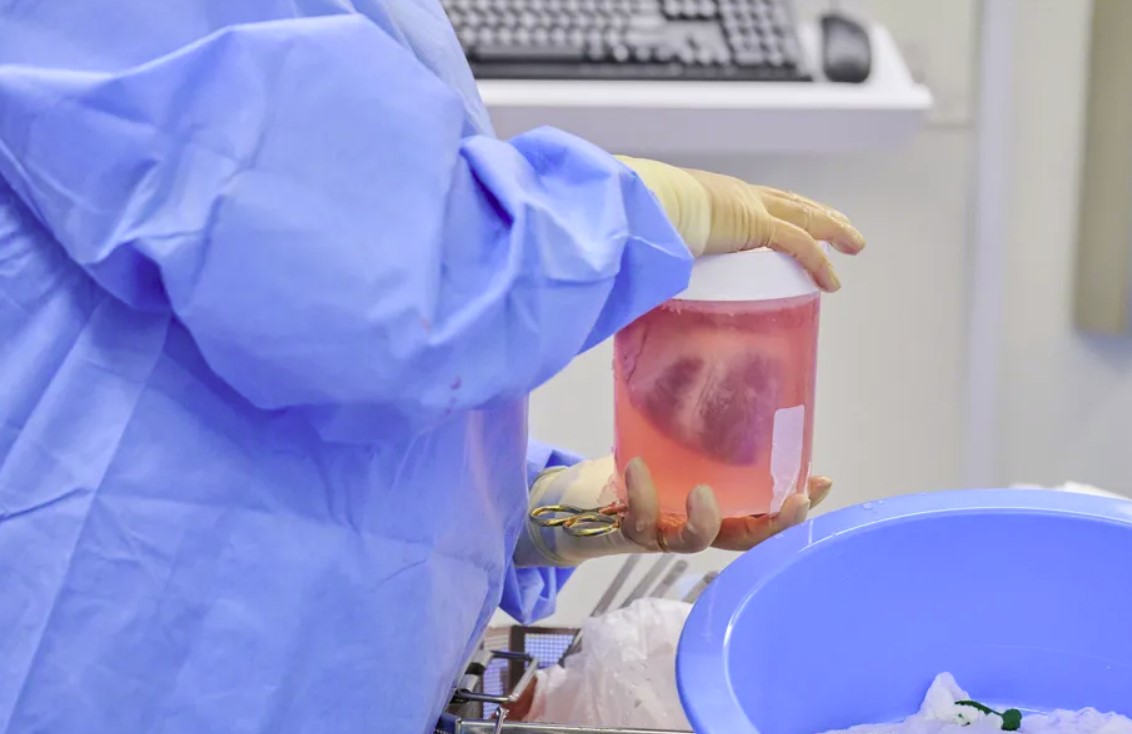Researchers have transplanted genetically modified pig hearts into the bodies of dead people

Researchers successfully transplanted genetically modified pig hearts into two recently deceased persons who were connected to ventilators, according to the New York University team. The developments are the latest step forward in the realm of animal-to-human transplants, or xenotransplantation, which has seen a slew of successes thus far this year—raising expectations for a new, steady supply of organs to relieve shortages.
The only thing that distinguishes these heart transplants from standard human-to-human heart transplants is the organ itself, according to the research team. “Our objective is to combine methods utilized in a typical, routine heart transplant with those used in nonhuman organ transplants that will function on their own without the need of untested devices or medicines,” said Nader Moazami, director of heart transplantation at NYU Langone Transplant Institute.
On June 16th and July 9th, the researchers transplanted hearts from pigs into two humans, and each recipient was observed for three days. The hearts functioned normally during that time, and there were no indications of rejection by the recipients, who were kept on ventilators to keep their bodily functions operating semi-regularly after death. Because of this study, the two subjects could not be organ donors but could participate in whole-body donation for future research.
The two pig hearts came from biotechnology firm Revivicor, which developed genetically modified pigs (and funded the study). The pigs had 10 genetic changes, four to block pig genes and prevent rejection and six to incorporate human genes.
In early January, a living person received a pig heart produced by Revivicor at the University of Maryland Medical Center. David Bennett Sr., who had severe heart disease, initially responded well to the transplant but died in March as a result of heart failure. The specific reason for his death is still unknown, although infection with a pig virus may have played a role. Experts claim that the pig hearts are presumably virus-free, yet detecting them might be difficult.
The NYU team said it had implemented enhanced virus screening procedures for its transplants. It also set aside an operating room specifically for xenotransplantation, so that it would not be used for other operations.
Even after a pig heart has been transplanted into a living person, Robert Montgomery, the director of the NYU Langone Transplant Institute, said during a press briefing that transplanting on dead patients is still important. “The emphasis is really on learning, studying, measuring, and trying to figure out what's going on with this brand-new amazing technology," he explained. Every day, they were able to take biopsies. Because the recipient was still alive at the University of Maryland research team couldn't study the transplant in as much detail, according to him.
The technique has also been used at NYU to test xenotransplantation of the brain. A pig kidney was successfully implanted in the leg of a ventilator-dependent patient this fall, according to NYU. The body did not reject the organ, and it worked normally for 54 hours after implantation.
Researchers are still working toward full clinical trials of xenotransplantation in living humans. They'd need permission from the Food and Drug Administration to do so. The NYU team aims to extend the amount of time they monitor a transplanted heart to gather more data to help with studies, according to Montgomery. He thinks that clinical trials might begin within the next two decades. In April, Revivicor said it was aiming for clinical trials beginning in the next year or two.
Although there is still much to learn about xenotransplantation, and the ethical consequences of animal-to-human procedures remains uncertain, if they work, they might be a new choice for thousands of people on organ waiting lists.
“Xenotransplantation, I believe, offers the best chance for a renewable, sustainable source of organs so that no one will have to die waiting for an organ,” Montgomery said.
Source: www.theverge.com